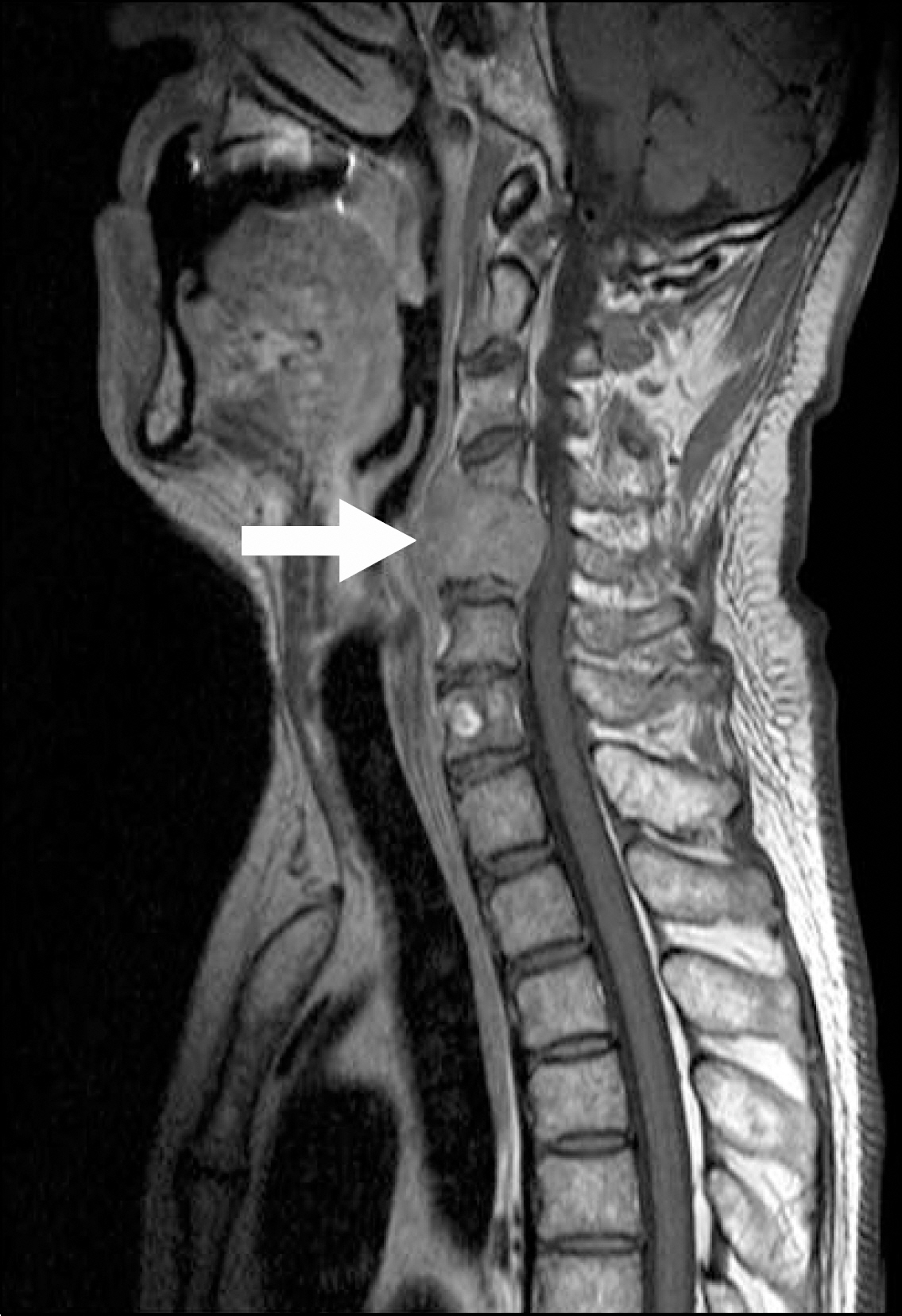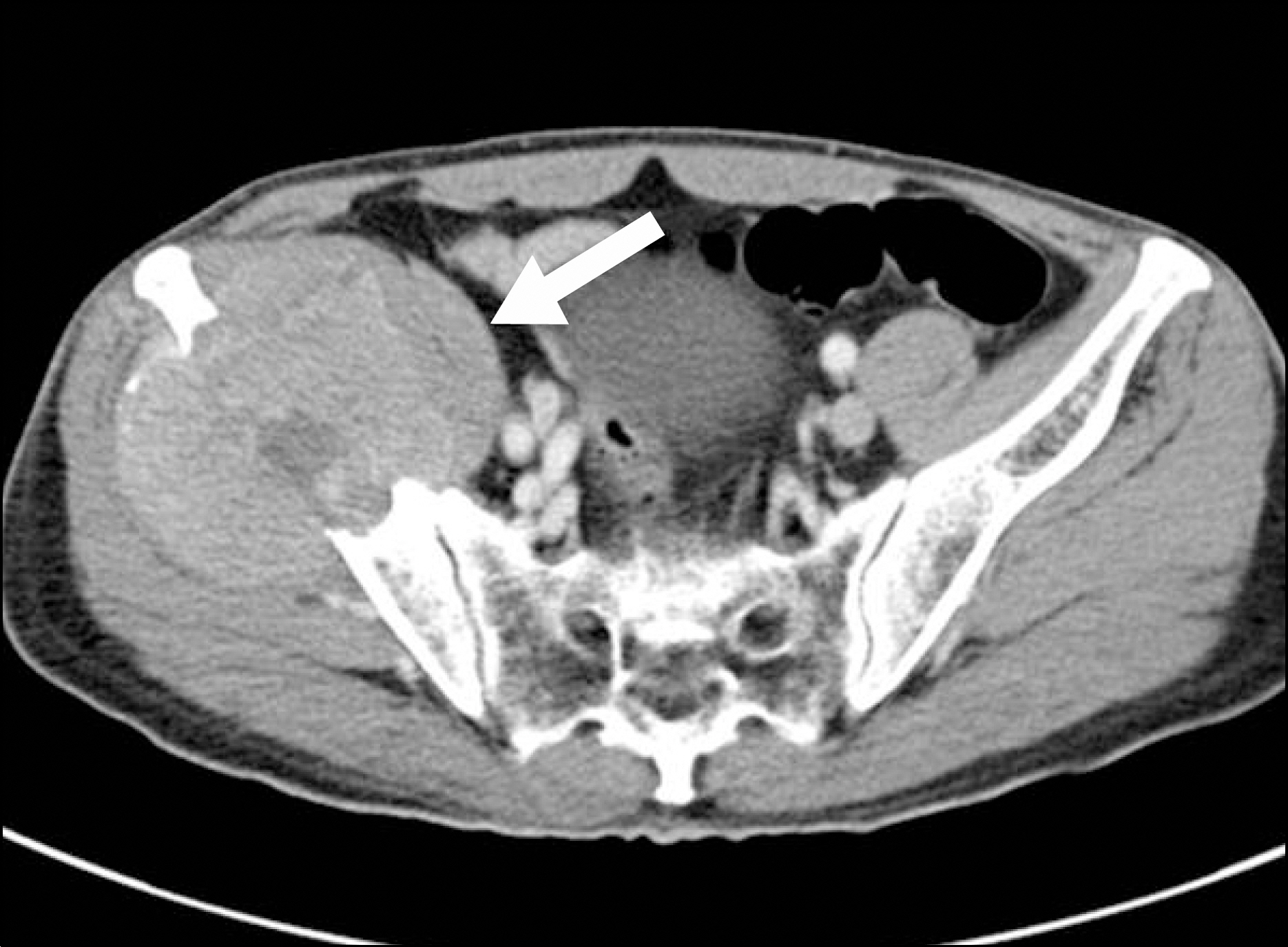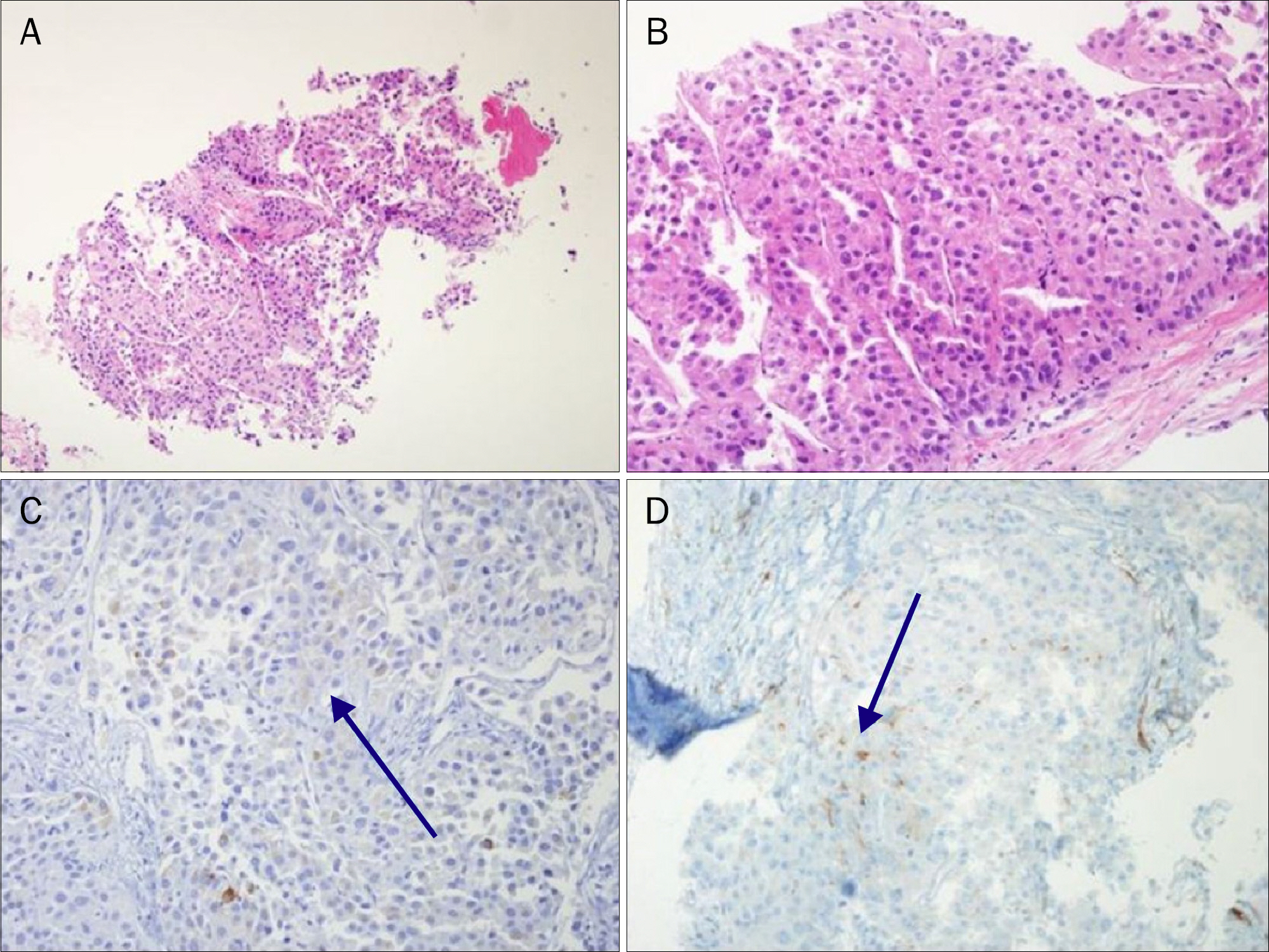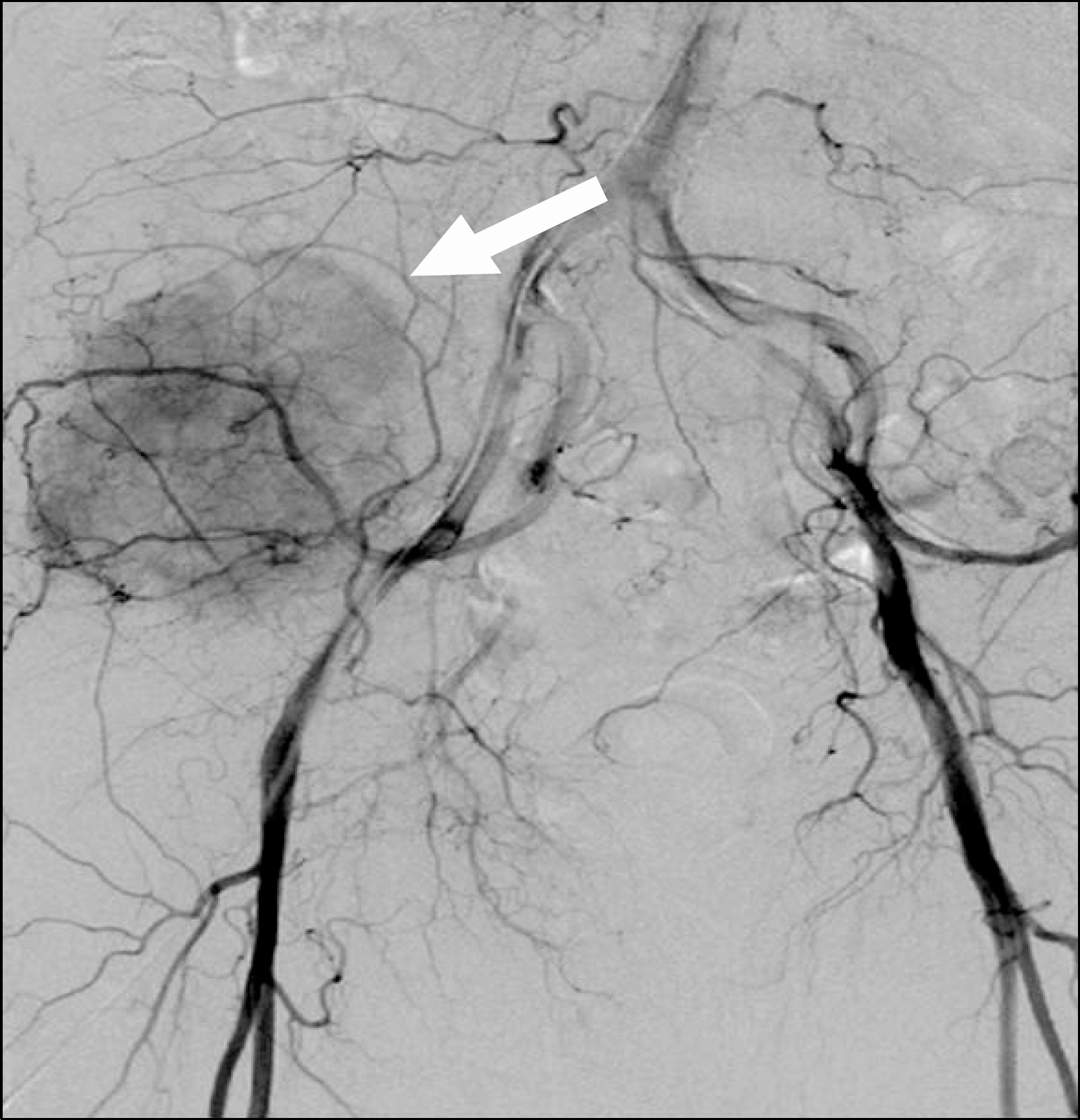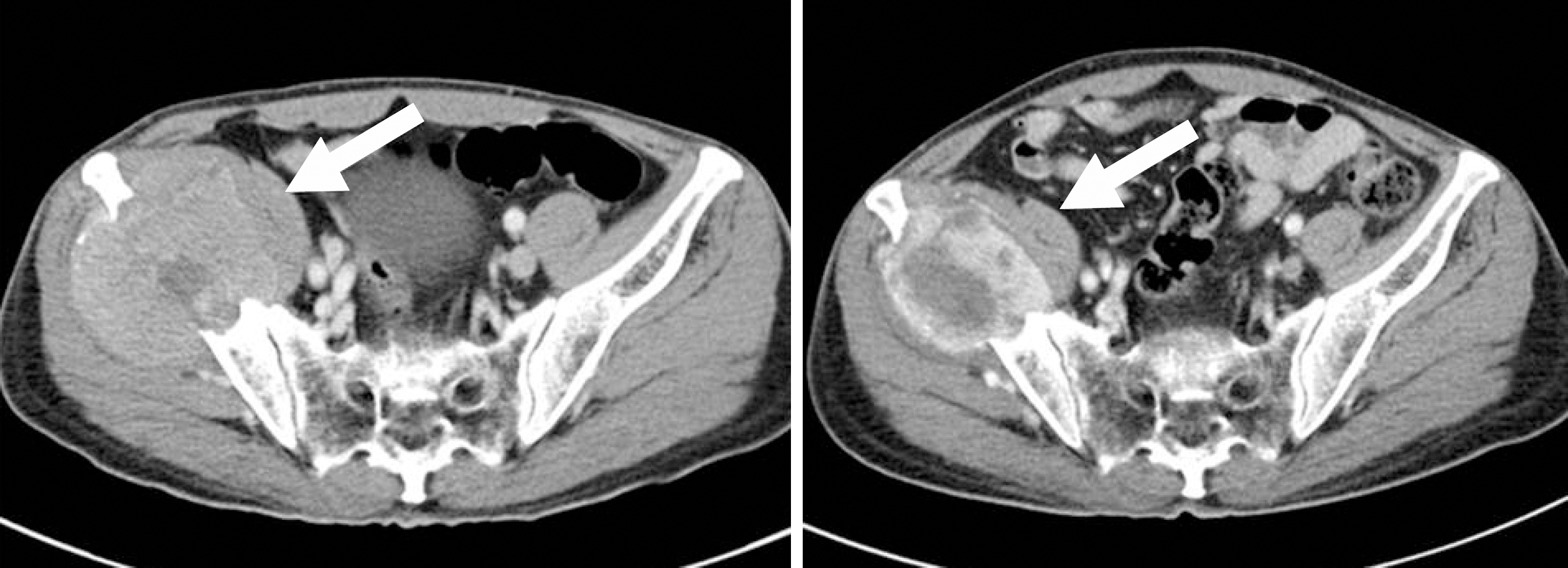Korean J Gastroenterol.
2015 Jul;66(1):50-54. 10.4166/kjg.2015.66.1.50.
Hepatocellular Carcinoma with Cervical Spine and Pelvic Bone Metastases Presenting as Unknown Primary Neoplasm
- Affiliations
-
- 1Department of Internal Medicine, Seoul St. Mary's Hospital, College of Medicine, The Catholic University of Korea, Seoul, Korea. befamiliar@naver.com
- 2Department of Radiology, Seoul St. Mary's Hospital, College of Medicine, The Catholic University of Korea, Seoul, Korea.
- 3Department of Hospital Pathology, Seoul St. Mary's Hospital, College of Medicine, The Catholic University of Korea, Seoul, Korea.
- KMID: 2373312
- DOI: http://doi.org/10.4166/kjg.2015.66.1.50
Abstract
- The occurrence of hepatocellular carcinoma (HCC) is closely associated with viral hepatitis or alcoholic hepatitis. Although active surveillance is ongoing in Korea, advanced or metastatic HCC is found at initial presentation in many patients. Metastatic HCC presents with a hypervascular intrahepatic tumor and extrahepatic lesions such as lung or lymph node metastases. Cases of HCC presenting as carcinoma of unknown primary have been rarely reported. The authors experienced a case of metastatic HCC in a patient who presented with a metastatic bone lesion but no primary intrahepatic tumor. This case suggests that HCC should be considered as a differential diagnosis when evaluating the primary origin of metastatic carcinoma.
MeSH Terms
-
Antineoplastic Agents/therapeutic use
Bone Neoplasms/*diagnosis/diagnostic imaging/secondary
Carcinoma, Hepatocellular/*diagnosis/drug therapy
Cervical Cord/pathology
Chemoembolization, Therapeutic
Gamma Rays
Humans
Liver Neoplasms/*diagnosis/drug therapy
Magnetic Resonance Imaging
Male
Middle Aged
Neoplasms, Unknown Primary/pathology
Niacinamide/analogs & derivatives/therapeutic use
Pelvic Bones/pathology
Phenylurea Compounds/therapeutic use
Tomography, X-Ray Computed
Antineoplastic Agents
Niacinamide
Phenylurea Compounds
Figure
Cited by 1 articles
-
A Case of Hepatocellular Carcinoma Presenting as a Gingival Mass
Min Jung Kwon, Soo Hyung Ryu, Soo Yeon Jo, Chul Hoon Kwak, Won Jae Yoon, Jeong Seop Moon, Hye Kyung Lee
Korean J Gastroenterol. 2016;68(6):321-325. doi: 10.4166/kjg.2016.68.6.321.
Reference
-
References
1. Jung KW, Won YJ, Kong HJ, Oh CM, Seo HG, Lee JS. Prediction of cancer incidence and mortality in Korea, 2013. Cancer Res Treat. 2013; 45:15–21.
Article2. de Lope CR, Tremosini S, Forner A, Reig M, Bruix J. Management of HCC. J Hepatol. 2012; 56(Suppl 1):S75–S87.
Article3. Kummar S, Shafi NQ. Metastatic hepatocellular carcinoma. Clin Oncol (R Coll Radiol). 2003; 15:288–294.
Article4. Fukutomi M, Yokota M, Chuman H, et al. Increased incidence of bone metastases in hepatocellular carcinoma. Eur J Gastroenterol Hepatol. 2001; 13:1083–1088.
Article5. Natsuizaka M, Omura T, Akaike T, et al. Clinical features of hepatocellular carcinoma with extrahepatic metastases. J Gastroenterol Hepatol. 2005; 20:1781–1787.
Article6. Ahmad Z, Nisa AU, Uddin Z, Azad NS. Unusual metastases of hepatocellular carcinoma (hcc) to bone and soft tissues of lower limb. J Coll Physicians Surg Pak. 2007; 17:222–223.7. Takahama J, Taoka T, Marugami N, et al. Hepatocellular carcinoma of the iliac bone with unknown primary. Skeletal Radiol. 2010; 39:721–724.
Article8. Jung KS, Park KH, Chon YE, et al. A case of isolated metastatic hepatocellular carcinoma arising from the pelvic bone. Korean J Hepatol. 2012; 18:89–93.
Article9. Hofmann HS, Spillner J, Hammer A, Diez C. A solitary chest wall metastasis from unknown primary hepatocellular carcinoma. Eur J Gastroenterol Hepatol. 2003; 15:557–559.
Article10. Hyun YS, Choi HS, Bae JH, et al. Chest wall metastasis from unknown primary site of hepatocellular carcinoma. World J Gastroenterol. 2006; 12:2139–2142.
Article11. Ahmad K, Sah P, Dhungel K, et al. An unusual case report of hepatocellular carcinoma metastasis to the chest wall presenting as breast lump. Nepal J Medi Sci. 2012; 1:138–140.
Article12. Oquiñena S, Guillen-Grima F, Iñarrairaegui M, Zozaya JM, Sangro B. Spontaneous regression of hepatocellular carcinoma: a systematic review. Eur J Gastroenterol Hepatol. 2009; 21:254–257.
Article13. Huz JI, Melis M, Sarpel U. Spontaneous regression of hepatocellular carcinoma is most often associated with tumour hypoxia or a systemic inflammatory response. HPB (Oxford). 2012; 14:500–505.
Article14. Sasaki T, Fukumori D, Yamamoto K, Yamamoto F, Igimi H, Yamashita Y. Management considerations for purported spontaneous regression of hepatocellular carcinoma: a case report. Case Rep Gastroenterol. 2013; 7:147–152.
Article15. Terracciano LM, Glatz K, Mhawech P, et al. Hepatoid adenocarcinoma with liver metastasis mimicking hepatocellular carcinoma: an immunohistochemical and molecular study of eight cases. Am J Surg Pathol. 2003; 27:1302–1312.16. Lee JE, Bae SH, Choi JY, Yoon SK, You YK, Lee MA. Epirubicin, cisplatin, 5-FU combination chemotherapy in sorafenib-refractory metastatic hepatocellular carcinoma. World J Gastroenterol. 2014; 20:235–241.
Article
- Full Text Links
- Actions
-
Cited
- CITED
-
- Close
- Share
- Similar articles
-
- Chest Wall Metastasis from Unknown Primary Hepatocellular Carcinoma: A case report
- A Case of Metastatic Small Hepatocellular Carcinoma to Cranial Bone with Left Eyelid Ptosis
- Multiple Bone Metastases in a Patient with Small Hepatocellular Carcinoma
- Patterns of recurrent cervical carcinoma on CT
- Endobronchial Metastases of Hepatocellular Carcinoma

